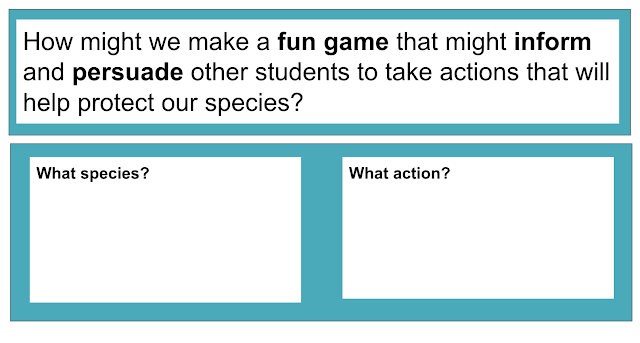I was recently asked how I introduce a new technology like micro:bits to student, so I thought I might write a blog post with some of my thoughts about this.
What is the micro:bit you ask?
The BBC micro:bit is an inexpensive electronic circuit board designed for students to learn electronics and coding. It includes buttons and lights and sensors that lend themselves to creating amazing interactive projects. When a student connects the micro:bit to a computer with a USB cable, they can quickly program the board with new interactions using beginner-friendly code environments, such as Microsoft MakeCode.
Over the past few years, we’ve watched the popularity of micro:bit skyrocket in our educator community. The board’s rugged, yet friendly design holds up to repeated use and the curriculum developed by the Micro:bit Educational Foundation is top-notch and easy to implement.
I've recently created this graphic to capture my pedagogical approach to learning through creating and making. The framework has evolved from personal experience with teaching and learning and from the opportunity to learn with and from talented educators over the years.
The INSPIRE phase is a time to explore something in a way that motivates the learner to create and make something meaningful. It is based on the belief that MOTIVATION is the foundation of all meaningful learning. There are several ways to create an activity that INSPIRES or motivates.
One way that I introduce the micro:bit is by having students engage in a few rounds of Rock Paper Scissors. This gets the whole class warmed up and thinking about fun. It is a game that most learners are already familiar with so it connects to prior knowledge.
Then I tell them that they are going to learn to create a fun wearable that can be used to play Rock Paper Scissors.
Once a student is inspired, it is helpful to take some time to create confidence with new tools and processes. I like to design some skill building sprints to build student confidence with a new tool or skill.
I especially like designing activities that lend themselves to cross-curricular integration. I've picked up a few different books related to Rock Paper Scissors for students to dive into as well as a few web sites like this BBC News article: How to win at rock-paper-scissors
During the Create Confidence phase, I like to teach students how to learn on their own using the MAKE CODE tutorials.
I encourage students to go through the DICE tutorial as it has so much potential for enrichment and expansion. Once they understand how to navigate the various resources at their finger tips, they can continue to grow their confidence on their own.
Once students are starting to feel some creative confidence, it is time to challenge them to apply their skills and MAKE SOMETHING MEANINGFUL. This can take on several forms. I often refer to this list from a respected colleague, Michael Pope.
around a curricular theme.











No comments:
Post a Comment